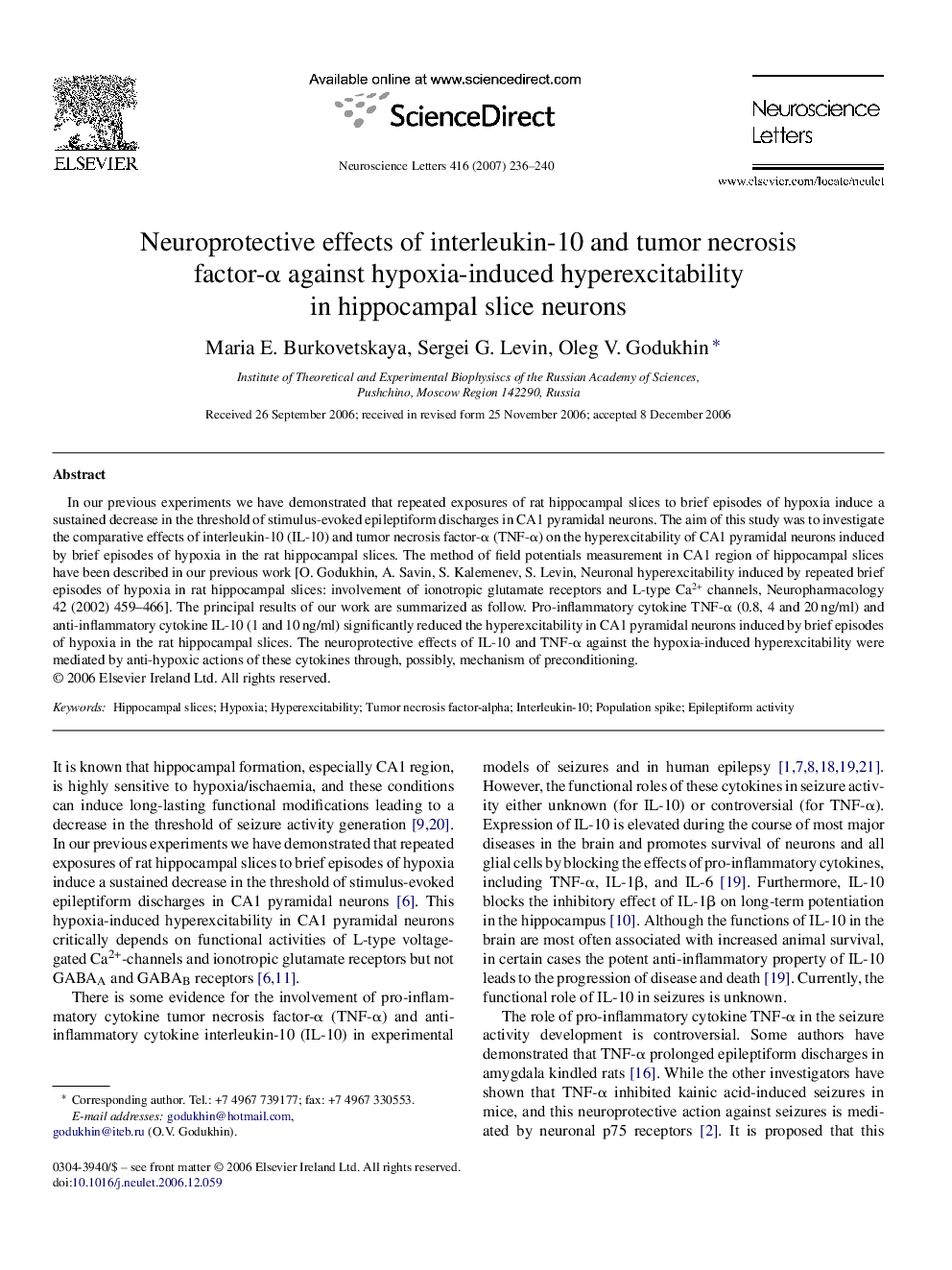| Article ID | Journal | Published Year | Pages | File Type |
|---|---|---|---|---|
| 4349474 | Neuroscience Letters | 2007 | 5 Pages |
In our previous experiments we have demonstrated that repeated exposures of rat hippocampal slices to brief episodes of hypoxia induce a sustained decrease in the threshold of stimulus-evoked epileptiform discharges in CA1 pyramidal neurons. The aim of this study was to investigate the comparative effects of interleukin-10 (IL-10) and tumor necrosis factor-α (TNF-α) on the hyperexcitability of CA1 pyramidal neurons induced by brief episodes of hypoxia in the rat hippocampal slices. The method of field potentials measurement in CA1 region of hippocampal slices have been described in our previous work [O. Godukhin, A. Savin, S. Kalemenev, S. Levin, Neuronal hyperexcitability induced by repeated brief episodes of hypoxia in rat hippocampal slices: involvement of ionotropic glutamate receptors and L-type Ca2+ channels, Neuropharmacology 42 (2002) 459–466]. The principal results of our work are summarized as follow. Pro-inflammatory cytokine TNF-α (0.8, 4 and 20 ng/ml) and anti-inflammatory cytokine IL-10 (1 and 10 ng/ml) significantly reduced the hyperexcitability in CA1 pyramidal neurons induced by brief episodes of hypoxia in the rat hippocampal slices. The neuroprotective effects of IL-10 and TNF-α against the hypoxia-induced hyperexcitability were mediated by anti-hypoxic actions of these cytokines through, possibly, mechanism of preconditioning.
